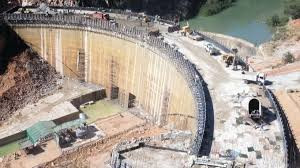
By Reward Magadhi
Traffic jams are now a daily experience in Zimbabwe, especially in Harare. Every day, commuters must deal with nightmarish peak-hour traffic.
The snarl-ups have affected urban life resulting in increased travel times, fuel consumption, and pollution.
In recent years, we have witnessed an unprecedented rate of motorisation. Many people have resorted to private vehicles because they are more convenient and comfortable than public transport. Others fret at the threat of becoming victims of delinquents on crowded buses.
For some, owning and driving a car is a symbol of social status.
As a result, many new vehicles have been introduced into our traffic flow, consequently exerting heavy pressure on the road network.
Apart from the widespread use of private vehicles, poor roads and a pervasive driving culture that disregards other road users aggravate the situation.
The government’s piecemeal response to the problem is cause for concern. The move to impose a Zupco monopoly and ban private operators without providing a viable alternative worsened the congestion.
- Chamisa under fire over US$120K donation
- Mavhunga puts DeMbare into Chibuku quarterfinals
- Pension funds bet on Cabora Bassa oilfields
- Councils defy govt fire tender directive
Keep Reading
It exposed the policy bungling in our government. A grand strategic change in the public transport sector largely depends on the provision of a viable alternative.
Because of the government’s ill-conceived plan, commuters now have to wait for hours to get transport as Zupco buses cannot meet the demand.
Noticing a gap, pirate taxi operators have seized the moment and started ferrying commuters. However, they now face vehicle seizure, and the passengers have to pay a $2000 fine if caught by the police.
As MDC Alliance secretary for transport, Settlement Chikwinya, rightly pointed out: “Zupco is not capable of serving the growing mass travellers. Zupco buses are too few as compared to the demand by travellers. Faced with a crippling shortage of transport, travellers will resort to private players.”
Zupco’s monopoly is indeed unsustainable.
Agencies must design public transport to make it an attractive and everyday choice for residents. It should be reliable, frequent, fast, comfortable, convenient, affordable, and safe.
The government should re-engage registered private transporters with roadworthy and comfortable buses to operate within an elaborate regulatory framework that helps ensure high standards in service delivery. Apart from easing our employment challenges, this will also help boost the collective transport fleet.
Adopting industry best practices can help public transportation agencies improve services.
First, they should improve frequency. Planners can create reserved lanes for public transportation to ensure that buses move faster and stick to their schedules.
If operators assure commuters of shorter transit times, public transport becomes a viable alternative.
Additionally, transit agencies can streamline the ticketing process. Slow and crowded ticket lines do not appeal to passengers.
Public transport operators must also find a way to increase passenger comfort and safety.
Passengers generally feel uncomfortable when they cannot get seats. Because of Covid-19, people are also sensitive to the invasion of personal space, which is common in crowded places.
Therefore, transit operators must consider ways to mitigate crowding. They should also continue observing Covid-19 protocols to reassure passengers.
Along with this, transit agencies should improve the quality of the bus ride itself: a quieter and smoother ride will reduce stress and attract more riders.
In addition, they should simplify bus routes and mark the buses with route numbers to make it easier for commuters to identify the buses they should board.
Why not just expand our roads to accommodate more cars and ease congestion, one may ask. This argument seems plausible and may work in the short term, but empirical evidence has shown that increasing road capacity in congested conditions can worsen traffic jams. More space on the roads will inevitably invite more cars. This paradox is called induced demand.
Economist Anthony Downs once warned American policymakers: “On urban commuter expressways, peak-hour traffic congestion rises to meet maximum capacity.”
American historian Lewis Mumford ridiculed the road expansion initiative, likening it to “the tailor’s remedy for obesity — letting out the seams of trousers and loosening the belt.”
An elaborate public transport strategy can help ease congestion and boost travel speeds. Better public transit will lower the number of car commuters, thus reducing the most space-intense vehicles on our roads.
Policymakers need to remember that where transportation alternatives do not exist, transport cultures cannot change. Therefore, planners must provide options to the car that are comparable in cost and comfort.
- Reward Magadhi is a researcher who writes about public policy issues.









